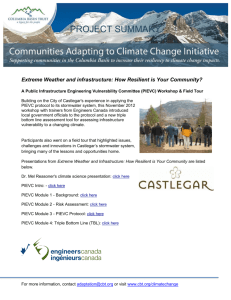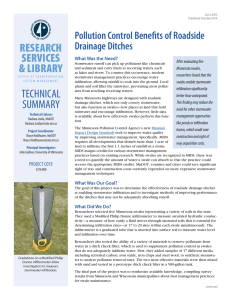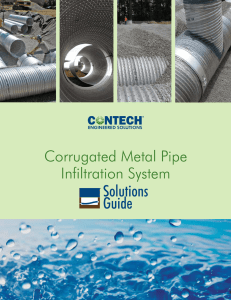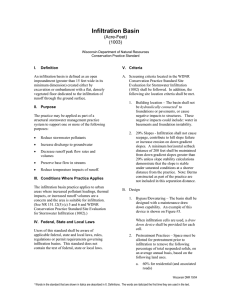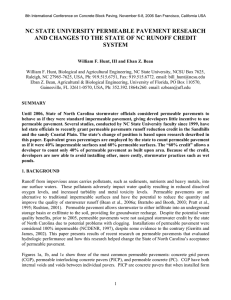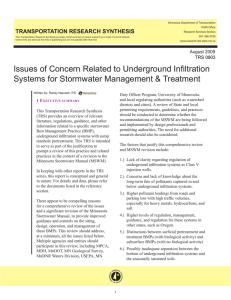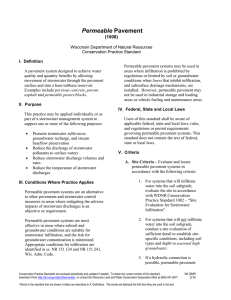Transitioning to Integrated Water Management
advertisement
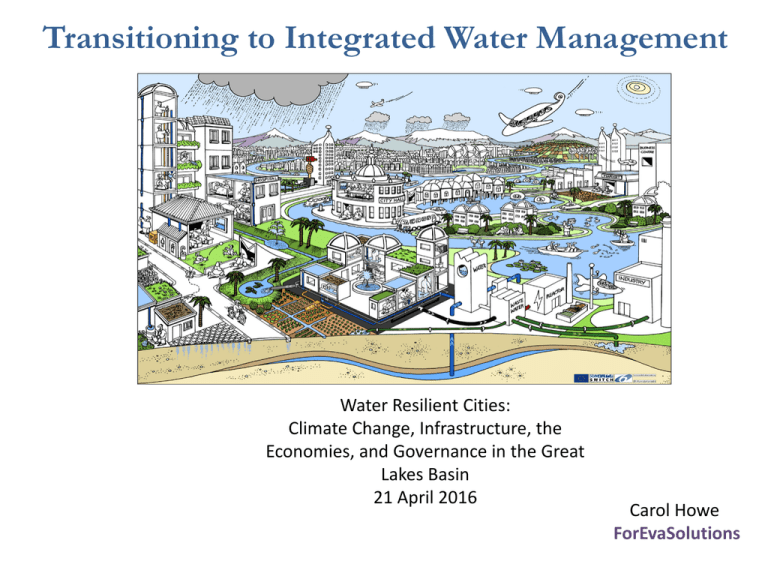
Transitioning to Integrated Water Management Water Resilient Cities: Climate Change, Infrastructure, the Economies, and Governance in the Great Lakes Basin 21 April 2016 Carol Howe ForEvaSolutions Water Management Continuum Urban Water Transitional City States (Brown, Keath, & Wong, 2008) Integrated Water Management Has many names: Regenerative infrastructure Integrated water resource management (IWRM) Water sensitive design Water sensitive cities Total water cycle management • Integrated resource planning • Whole water • • • • • • One Water And many visions: • Cities as water supply catchments • Cities as sponges • Cities as carbon sinks • Cities as blue-green networks • Cities as vertical forests Integration for One Water • Across technologies - hybrid systems of grey and green infrastructure • Across the water cycle – water, wastewater, stormwater and natural systems • Across social, environmental and economic disciplines • Across scales – household to city-wide Across institutions – linking urban planning with water, energy, transport, buildings and more Goals for One Water • Better living conditions for all • Healthier communities • Increased biodiversity • Improved air and water quality • Reduced urban footprint • Citizen enpowerment Resilient and sustainable systems - reduced impacts from floods and droughts Who might be involved? Architects Waste managers Parks Departments Water utilities Economic Development Landscape Architects Energy providers Building Trades Planners Local and City officials Roads & Traffic Departments Health Departments Agriculture/Extension Services Citizens Developers NGOs Insurance Agencies Banks Environmental Regulators Fire Departments Innovative BMPs for Site Plans • Alternative Turnarounds • Conservation Easements • Development Districts • Eliminating Curbs and Gutters • Green Parking • Green Roofs • Infrastructure Planning • Low Impact Development • (LID) and Other Green Design Strategies • Narrower Residential Streets • Open Space Design • Protection of Natural Features • Redevelopment • Riparian/Forested Buffer • Street Design and Patterns • Urban Forestry 7 Infiltration Grassed Swales Infiltration Basin Infiltration Trench Permeable Interlocking Concrete Pavement Pervious Concrete Pavement Porous Asphalt Pavement Filtration Bioretention (Rain Gardens) Catch Basin Inserts Sand and Organic Filters Vegetated Filter Strip Retention/Detention Dry Detention Ponds In-Line Storage On-Lot Treatment Stormwater Wetland Wet Ponds https://www.epa.gov/npdes/national-menu-best-management-practices-bmpsstormwater#post Green infrastructure and Decentralization Focus Areas to Enable Change What is Institutional Transitioning? Hard • Organizational structures • Departments • Committees • Laws • Regulations • Taxes & Subsidies Soft • Social relations • Informal networks • Administrative routines • Professional cultures • Social worlds Leadership • Provide the forum to break down silos • Create a unified strategic vision • Create regional leadership committees • Unify branding • Encourage innovation Rebranding to Reflect Changing Roles Vision Statement One Water LA is a collaborative approach to develop an integrated framework for managing the City’s watersheds, water resources, and water facilities in an environmentally, economically and socially beneficial manner. One Water LA will lead to smarter land use practices, healthier watersheds, greater reliability of our water and wastewater systems, increased efficiency and operation of our utilities, enhanced livable communities, resilience against climate change, and protection of public health. Collaborative Planning Siloed planning Lack of flexibility Lack of holistic planning tools & funding to support integration Politics PARTNER, PARTNER, PARTNER Pittsburgh’s 3 Rivers Wet Weather facilitated the coordination of actions across 83 municipalities including cost sharing and regionalization. Cincinnati’s Project Groundwork fostered collaborative data sharing between Cincinati MSD, the county, EPA and local universities for evaluation of the performance of green infrastructure, saving taxpayers ~$200M. Plan Together STAR Sustainability Community Rating System • Create ‘Learning Alliances’ • Coordinate large data sets and cross organization information – cloud storage • Provide GIS and visualization tools • Measure indirect benefits and benchmark overall progress Culture, Knowledge & Capacity State of Minnesota revised their Revolving Water Fund Organizational resistance, conservatism + inertia Lack of incentives + champions No time to ‘think outside box’ Disciplinary imbalances criteria and priority ranking system to appropriately weight the value of decentralized systems. To do this and then build the local capacity to implement the new system, they and EPA entered into statewide capacity building for local administrators. Melbourne Water conducted an internal role analysis that showed that the organization relied on a small number of key individuals to further IWM outcomes and that this posed significant risk to the organization. Based on this, they moved to broaden this internal capacity. Economics Improved aesthetics/property value Bolincreek.org 2% • Use Triple Bottom Line processes including nonmonetary benefits 5% Reduction in heat stress mortality < 1% 1% Water quality/aquatic habitat enhancement 4% 18% Wetland services 12% • Develop incentive programs such as rebates and credits Social costs avoided by green collar jobs 20% 37% • Incorporate stormwater management into property taxes or separate utilities • Encourage publicprivate partnerships Air quality improvements from trees Energy savings Reduced damage from SO2 and NOx emissions Philadelphia Reduced damage from CO2 Shares of City-wide present emissions value benefits of key CSO Bractwalls.com options Cumulative through 2049 Prepared for the Philadelphia Water Department by Abt Environmental Research (formerly Stratus Consulting) through a subcontract with Camp, Dresser, and McKee (CDM). Increased recreational opportunities Legislation Policy • Develop or build on existing guidelines and rating schemes Regulations • Streamline permitting processes • Develop or adopt model ordinances and codes Solaire Building Rooftop – New York San Francisco PUC streamlined the permitting process of on-site, non-potable water systems bringing together water, public health and building inspectors Battery Park City Authority required every property to meet strict sustainability criteria and has continued to tighten guidelines including 100% water recycling and annual accounting for water and energy savings. Engagement • Joint demos have power – seeing is believing Local Raingardens • Empower customers and citizens • Learn to speak differently – consider your audience • Get savvy with outreach technology Bolincreek.org PWSA Charette Process Pittsburgh Charrette Process • Embed engagement in planning – interactive design workshops, public outreach and education Integration Begins with Current Issues Stir in the Right Ingredients Research Demonstrations Learning Alliances Strategic Planning Combining activities was at the heart of the logic of SWITCH End Result - More Liveable and Resilient Cities CISTA by MOSS SUND / Fig 40





